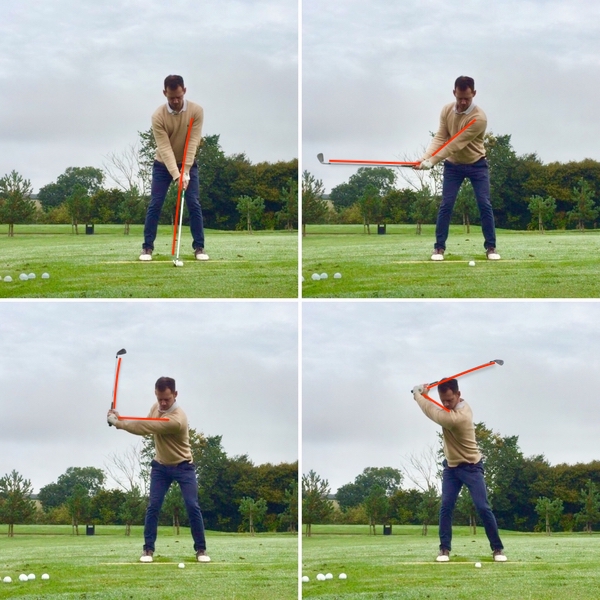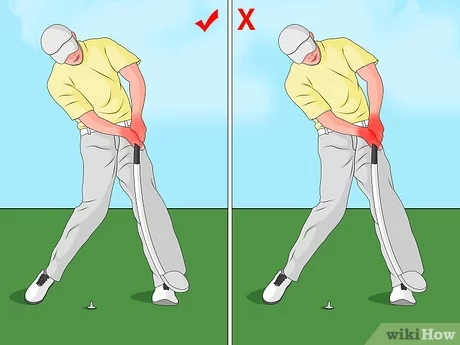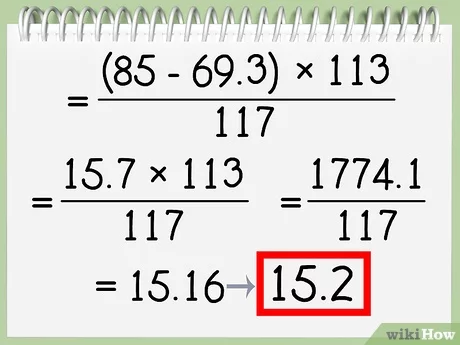Swinging a golf club correctly is essential for a good game. It might seem hard, but it’s easier with some guidance.
Learning to swing a golf club involves understanding the basics. You need to know how to grip the club, position your body, and execute the swing. This process can be daunting for beginners, but breaking it down into simple steps makes it manageable.
In this blog post, we will guide you through each step of swinging a golf club. Whether you’re new to golf or looking to improve your swing, these tips will help you. Let’s start with the fundamentals and build your skills from there.

Credit: golfinsideruk.com
Introduction To Golf Swing
Golf is a timeless sport that requires precision, patience, and practice. The foundation of a great golf game is a solid swing. Whether you’re a novice or an experienced player, understanding the fundamentals can greatly enhance your performance on the course.
Importance Of Technique
The technique of your golf swing is crucial. A good technique ensures that your shots are accurate and consistent. Here are a few reasons why technique is important:
- Accuracy: Proper technique helps you hit the ball where you want it to go.
- Consistency: It allows you to replicate your swing, leading to consistent shots.
- Power: A correct technique maximizes the power transferred to the ball.
Common Mistakes
Even seasoned players can make mistakes. Identifying and correcting these can greatly improve your game. Here are some common mistakes:
| Common Mistake | Description |
|---|---|
| Improper Grip | A grip that’s too tight or too loose can affect your swing. |
| Poor Stance | Your stance should be balanced and stable. An incorrect stance can lead to off-target shots. |
| Over-Swinging | Trying to hit the ball too hard can lead to loss of control. |
Choosing The Right Equipment
Choosing the right equipment is crucial for swinging a golf club effectively. The right club and grip can make a significant difference in your swing performance. Let’s explore how to select the right club and ensure a proper grip.
Selecting The Right Club
Your club selection can affect your swing power and accuracy. Beginners often find it challenging to choose the right club. Here’s a simple guide:
- Drivers are for long-distance shots. Use them for teeing off.
- Irons are versatile. Use them for mid-range shots.
- Wedges help with short, high shots.
- Putters are for the final strokes on the green.
Consider the club’s length and weight. A club that’s too long or too heavy can disrupt your swing. Visit a local golf shop. Test different clubs to find what feels best in your hands.
Ensuring Proper Grip
A proper grip is essential for control and accuracy. Follow these steps for a correct grip:
- Hold the club with your left hand. Ensure the club runs diagonally across your fingers.
- Wrap your left hand around the club. Your thumb should point down.
- Place your right hand below your left. Your right palm should face the target.
- Interlock or overlap your right pinkie with your left index finger.
- Grip pressure should be firm but not tight. Imagine holding a small bird.
Practice gripping the club at home. Get comfortable with this setup. A proper grip can significantly improve your swing mechanics.
Setting Up Your Stance
Setting up your stance is crucial in golf. It provides balance and control. A good stance can improve your swing and accuracy. Let’s break it down into two key areas: feet position and body alignment.
Feet Position
Your feet should be shoulder-width apart. This gives you stability. Keep your weight balanced between both feet. Your toes should point slightly outward. This helps with balance and allows for a smooth swing. Make sure your knees are slightly bent. This keeps you flexible and ready to move.
Body Alignment
Align your body parallel to the target line. Your shoulders, hips, and feet should form a straight line. Check your shoulder alignment. They should be square to the target. Your spine should be straight, not hunched over. This helps maintain balance throughout your swing. Keep your head steady and eyes on the ball. This ensures you hit the ball cleanly.

Credit: www.wikihow.com
The Backswing
The backswing is a crucial part of swinging a golf club. It sets the stage for the rest of your swing. A good backswing can lead to a powerful and accurate shot. Let’s break it down into two key components: the starting position and the swing path.
Starting Position
Your starting position is vital for a proper backswing. Stand with your feet shoulder-width apart. Keep your knees slightly bent. Hold the club with a firm grip. Ensure your hands are in front of the ball. Your shoulders should be relaxed. Align them with your feet and hips.
Check your stance in a mirror if possible. This will help you maintain a consistent starting position. Consistency is key in golf. A good starting position leads to a smooth backswing.
Swing Path
Focus on your swing path during the backswing. Begin by turning your shoulders. Your arms should follow naturally. Keep your left arm straight (for right-handed golfers). Your right arm should bend slightly.
As you lift the club, hinge your wrists. This creates a 90-degree angle between your club and forearm. Your club should point towards the target at the top of the backswing. Avoid over-swinging. This can lead to loss of control and accuracy.
Practice your swing path slowly. Use a mirror or video to check your form. A consistent swing path ensures better contact with the ball.
The Downswing
The downswing is a crucial part of your golf swing. It’s where you generate power and accuracy. Understanding the downswing helps you improve your overall performance. Let’s break down the steps to master this part of the swing.
Transitioning From Backswing
The transition from backswing to downswing is key. Start by shifting your weight to your lead foot. This helps maintain balance. Your hips should begin to rotate towards the target. This rotation generates power. Keep your hands and arms relaxed. Let your body lead the movement.
Maintaining Control
Maintaining control during the downswing is essential. Focus on a smooth, steady motion. Avoid jerky or rushed movements. Keep your eyes on the ball. Your head should stay steady. This helps with accuracy and consistency.
As your hips rotate, your shoulders and arms will follow. This creates a fluid motion. Your club should approach the ball from the inside. This ensures a solid impact. Finish with a balanced follow-through. This completes the swing and prepares you for your next shot.

Credit: www.youtube.com
Impact And Follow Through
Understanding the Impact and Follow Through is key to improving your golf swing. It’s not only about the initial contact with the ball. The follow-through also plays a crucial role. Both parts together ensure a smooth, powerful swing.
Hitting The Ball
At the moment of impact, your hands should be ahead of the ball. This position helps you generate more power. Keep your eyes on the ball. A steady head position is essential. Your weight should shift from your back foot to your front foot. This shift adds force to your swing. Remember, a clean hit leads to better control. Make sure the clubface is square at impact.
Completing The Swing
Follow through after hitting the ball. Don’t stop your swing abruptly. Your body should turn towards the target. Finish with your weight on your front foot. Your club should end high, with the shaft over your shoulder. This position shows a complete follow-through. A full follow-through ensures maximum distance and accuracy. It also helps prevent injuries. Practice this often to develop muscle memory. A good follow-through makes your swing look effortless.
Practice Drills
Practice drills are essential for improving your golf swing. They help you build muscle memory and improve consistency. Below are some drills to enhance your skills.
Improving Consistency
Consistency is key in golf. Here are some drills to help you hit the ball consistently:
- One-Handed Swings: Use one hand to swing the club. Alternate between your left and right hand. This drill helps with balance and control.
- Slow-Motion Swings: Swing the club in slow motion. Focus on each part of the swing. This improves your form and accuracy.
- Mirror Drills: Practice in front of a mirror. Watch your posture and swing. Correct any mistakes you see.
Building Muscle Memory
Muscle memory is crucial for a smooth golf swing. Try these drills to build it:
- Repetition Drill: Take 50 swings each day. Do this without hitting a ball. Focus on your form and technique.
- Target Practice: Set up targets at different distances. Aim for these targets with each swing. This helps you control your swing power and direction.
- Weighted Club Drills: Use a heavier club for practice. Swing it to build strength. Switch back to your regular club to feel the difference.
These drills will help you improve your golf swing. Practice them regularly for the best results.
Analyzing Your Swing
Analyzing your swing is essential to improving your golf game. By understanding your swing mechanics, you can identify areas for improvement. This helps you make more consistent and accurate shots. Let’s dive into two key methods to analyze your swing.
Using Video Analysis
Video analysis is a powerful tool for golfers. It allows you to see your swing from different angles. This helps you understand what you’re doing right and wrong.
To start, record your swing with a smartphone or camera. Make sure to capture views from the front, back, and side. Use a tripod for steady shots.
Once you have your footage, watch it closely. Look for common mistakes such as:
- Improper grip
- Incorrect stance
- Poor follow-through
Compare your swing to professional golfers. Notice the differences and take notes. Use slow-motion playback to see finer details.
Many apps and software programs offer tools to help with video analysis. Some popular options include:
| App/Software | Features |
|---|---|
| V1 Golf | Slow-motion playback, drawing tools, side-by-side comparison |
| Hudl Technique | Frame-by-frame analysis, voice-over feedback |
| Coach’s Eye | Drawing tools, video sharing, angle measurements |
Seeking Professional Advice
Seeking professional advice can greatly benefit your golf swing. A golf coach can provide personalized feedback and tips. They can quickly spot issues that you might miss on your own.
To find a good coach, ask for recommendations from friends or local golf clubs. Look for certified instructors with positive reviews.
During a lesson, expect the coach to watch your swing and give immediate feedback. They might suggest drills to correct specific issues. For example:
- Improving your grip with grip trainers
- Enhancing your stance with alignment sticks
- Practicing follow-through with weighted clubs
Regular lessons can help you track your progress. They also keep you motivated and focused on improvement.
Combining video analysis with professional advice can lead to significant improvements. You’ll gain a deeper understanding of your swing and how to refine it.
Frequently Asked Questions
How Do I Improve My Golf Swing?
Improving your golf swing requires practice and proper technique. Focus on grip, stance, and follow-through. Seek professional lessons and analyze your swing using video. Consistency is key.
What Is The Correct Golf Grip?
The correct golf grip is crucial for a good swing. Use the Vardon grip, interlocking grip, or baseball grip. Ensure your hands are relaxed but firm.
How Important Is Stance In Golf Swing?
Stance is vital in a golf swing. It provides balance and stability. Position your feet shoulder-width apart. Bend your knees slightly and keep your weight balanced.
How Do I Perfect My Follow-through?
Perfecting your follow-through ensures a complete swing. Keep your head down and eyes on the ball. Finish with your chest facing the target.
Conclusion
Perfecting your golf swing takes practice and patience. Stay focused on your grip. Keep your stance balanced. Remember to follow through on each swing. Use these tips to improve your technique. Regular practice will enhance your skills. Enjoy the game and have fun.
Happy golfing!



